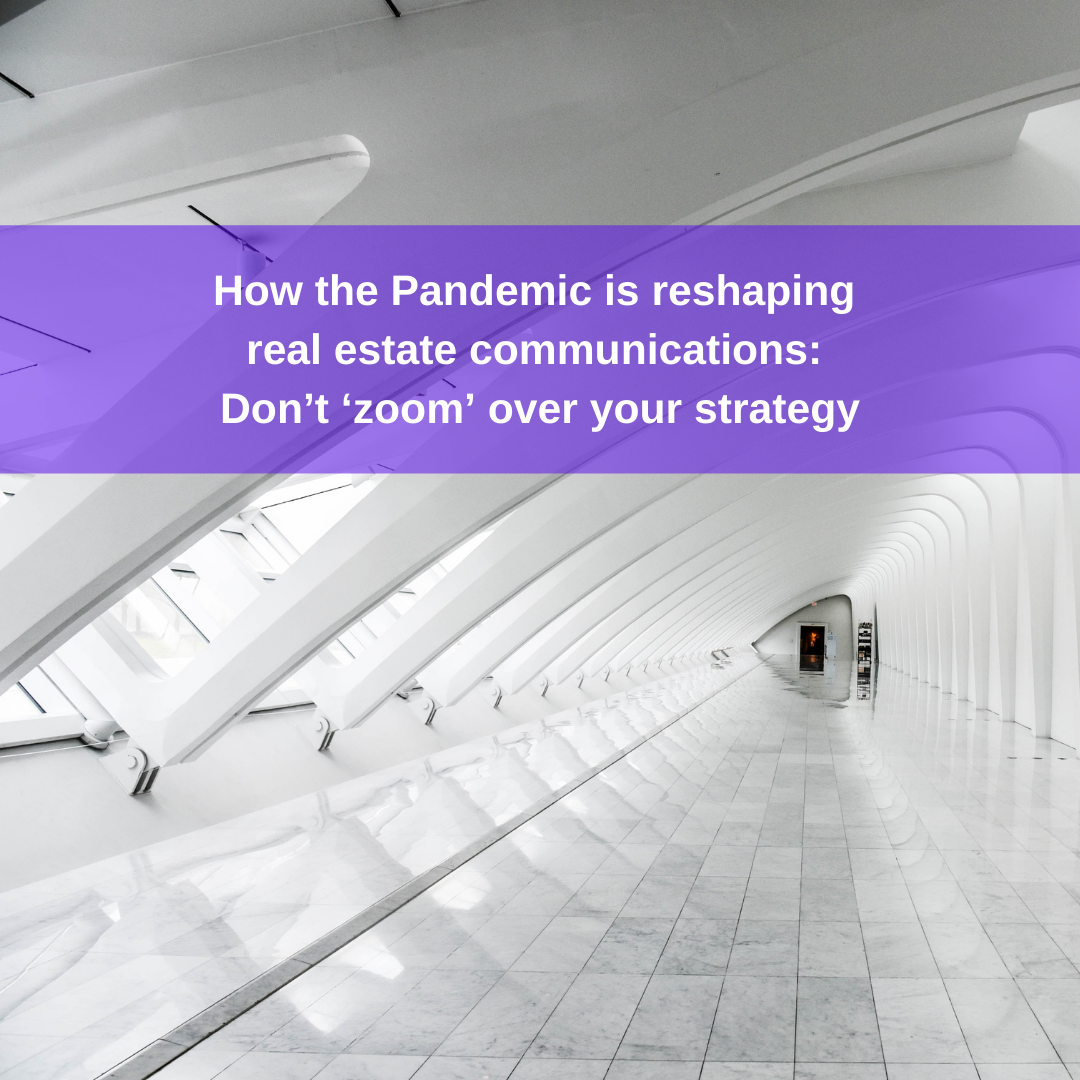
How the Pandemic is reshaping real estate communications: Don’t ‘zoom’ over your strategy
As McKinsey & Company cautioned in a white paper published in April, “commercial real estate must do more than merely adapt to coronavirus.”
To be sure, communicating remotely is now a business necessity, but the content of our messaging needs to change along with the methods and the media we are use. How do you structure a zoom call to get as much attention as the toddler sharing the home office? What elements should your press release contain to tap into editorial preferences for Covid stories? How can you make your social media stand out?
These are challenges every one of us is facing due to Covid-19, but perhaps even more so for the real estate industry which has traditionally relied on face-to-face interaction. As a real estate professional, you’re probably used to attending networking events and coming away with a half dozen leads. Today, your digital self is likely to be far less charismatic.
Those traditions are perhaps the reason many real estate companies are still playing catch-up with digital communications. A KPMG Global Prop Tech Survey found that only 29 percent of the companies surveyed have a digital strategy in place across their organization. Another 19 percent have no strategy at all.
But like it or not, engaging with clients, employees, tenants, business partners or the press digitally is essential in today’s environment, and crafting the right messaging will create an impression of your company and your brand that is likely to last long after the crisis.
The McKinsey authors note that, because owners and operators have an obligation to protect the health and safety of tenants above all else, more businesses may be adopting “company-level brand (rather than property-level brand)” communications.
The very nature of digital communications is driving other changes as well. The digital space doesn’t allow for the same adjustments easily made in face-to-face meetings. More than ever, your strategy should be grounded in an understanding of your brand and your market. You have to know when it’s okay to communicate as if it’s business as usual and when to acknowledge the uncertainties of the crisis. And if your messaging recognizes today’s challenges, that acknowledgement also has to make a connection with your brand that is authentic and meaningful.
Today we have to approach communications with the same caution. We have to keep a close eye on what reporters are responding to, and we have to craft press releases to tap into those elements as much as possible. We need to monitor social media to make sure its engaging.
Connecting with your audience is key. Sometimes, it may mean you forego the sales pitch for now and focus on making your clients feel you are there to help. It may mean providing information, resources or tools. Or it may mean picking up the phone just to check in, because if ever there was a time to build relationships that time is now.









